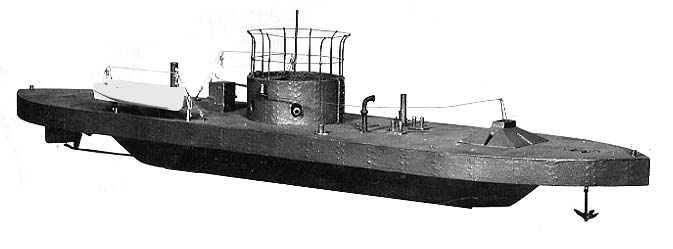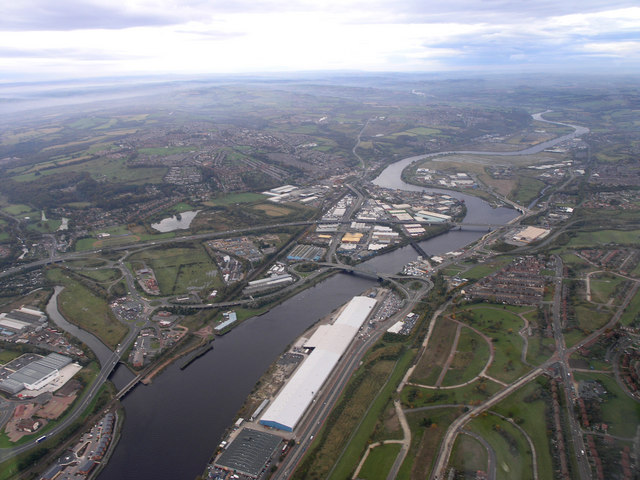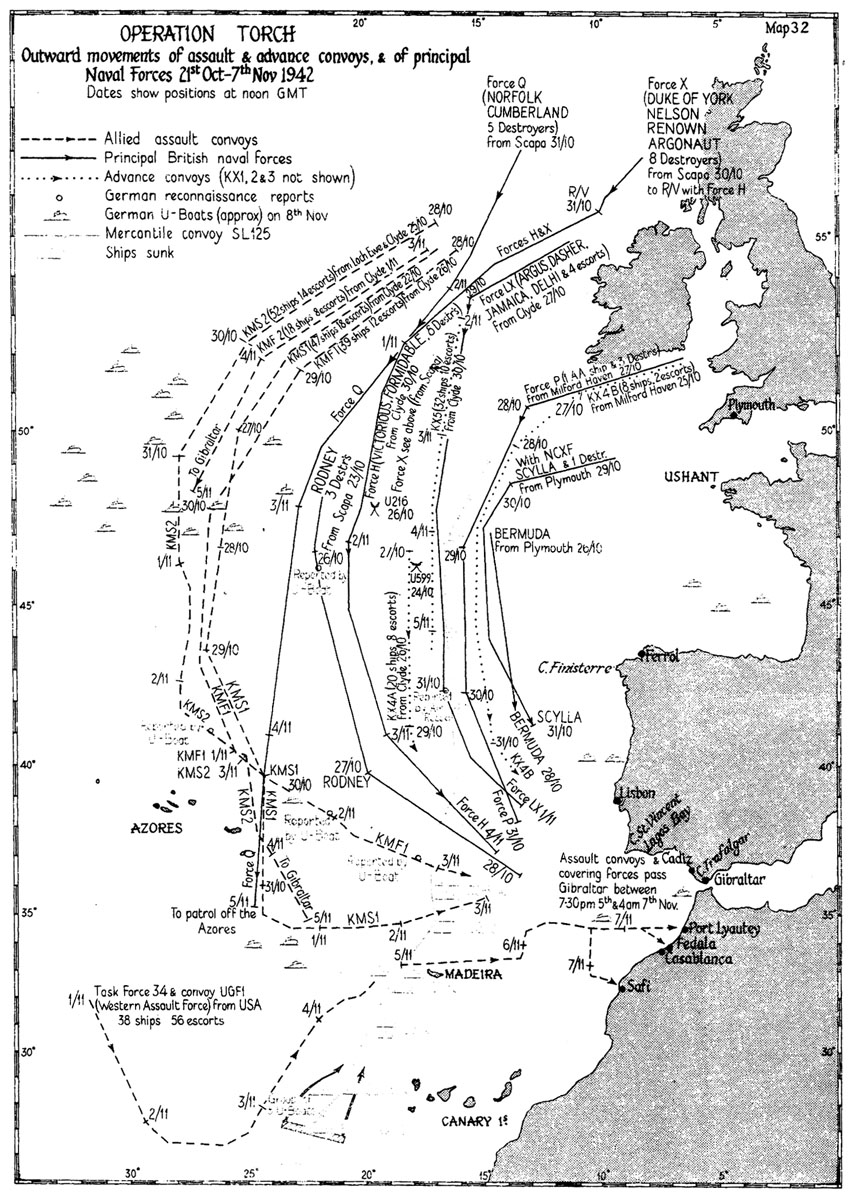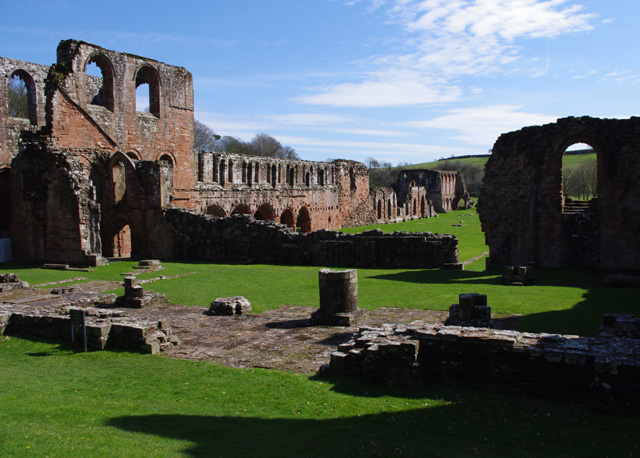|
Roberts-class Monitor
The ''Roberts'' class of monitors of the Royal Navy consisted of two heavily gunned vessels built during the Second World War. They were the ''Roberts'', completed in 1941, and ''Abercrombie'', completed in 1943. Features of the class, apart from two 15-inch guns in a twin mounting (taken from two First World War era ''Marshal Ney'' class monitors), were shallow draught for operating inshore, broad beam to give stability (and also resistance to torpedoes and mines) and a high observation platform to observe fall of shot. Ships *: Reused the turret of the World War I monitor ''Marshal Soult''. ''Roberts'' provided bombardment support during Operation Torch in North Africa, where she was damaged by two 500 kg bombs. She was repaired in time to support the Allied invasion of Sicily, landings near Salerno, invasion of Normandy, and landing at Westkapelle. :One of ''Roberts guns (formerly in HMS ''Resolution'') is mounted outside the Imperial War Museum in Lambeth, S ... [...More Info...] [...Related Items...] OR: [Wikipedia] [Google] [Baidu] |
Monitor (warship)
A monitor is a relatively small warship which is neither fast nor strongly armored but carries disproportionately large guns. They were used by some navies from the 1860s, during the First World War and with limited use in the Second World War. The original monitor was designed in 1861 by John Ericsson, who named it . They were designed for shallow waters and served as coastal ships. The term also encompassed more flexible breastwork monitors, and was sometimes used as a generic term for any turreted ship. In the early 20th century, the term was revived for shallow-draught armoured shore bombardment vessels, particularly those of the Royal Navy: the s carried guns firing heavier shells than any other warship ever has, seeing action (albeit briefly) against German targets during World War I. The ''Lord Clive'' vessels were scrapped in the 1920s. The term "monitor" also encompasses the strongest of riverine warcraft, known as river monitors. During the Vietnam War these much sm ... [...More Info...] [...Related Items...] OR: [Wikipedia] [Google] [Baidu] |
Vickers-Armstrongs
Vickers-Armstrongs Limited was a British engineering conglomerate formed by the merger of the assets of Vickers Limited and Sir W G Armstrong Whitworth & Company in 1927. The majority of the company was nationalised in the 1960s and 1970s, with the remainder being divested as Vickers plc in 1977. History Vickers merged with the Tyneside-based engineering company Armstrong Whitworth, founded by William Armstrong, to become Vickers-Armstrongs. Armstrong Whitworth and Vickers had developed along similar lines, expanding into various military sectors and produced a whole suite of military products. Armstrong Whitworth were notable for their artillery manufacture at Elswick and shipbuilding at a yard at High Walker on the River Tyne. 1929 saw the merger of the acquired railway business with those of Cammell Laird to form Metropolitan Cammell Carriage and Wagon (MCCW); Metro Cammell. In 1935, before rearmament began, Vickers-Armstrongs was the third-largest manufacturing emplo ... [...More Info...] [...Related Items...] OR: [Wikipedia] [Google] [Baidu] |
HMS Resolution (09)
HMS ''Resolution'' (pennant number: 09) was one of five s built for the Royal Navy during the First World War. Completed in December 1916, ''Resolution'' saw no combat during the war as both the British and German fleets adopted a more cautious strategy after the Battle of Jutland in May owing to the increasing threat of naval mines and submarines. ''Resolution'' spent the 1920s and 1930s alternating between the Atlantic Fleet and the Mediterranean Fleet. Whilst serving in the Mediterranean in the early 1920s, the ship went to Turkey twice in response to crises arising from the Greco-Turkish War, including the Great Fire of Smyrna in 1922. She also saw limited involvement during the Franco-British intervention in the Russian Civil War in the Black Sea in 1920. The ship's interwar career was otherwise uneventful. With the outbreak of the Second World War in September 1939, ''Resolution'' was assigned to the Channel Force before being transferred to convoy escort duties in the ... [...More Info...] [...Related Items...] OR: [Wikipedia] [Google] [Baidu] |
Operation Infatuate
Operation Infatuate was the code name given to an Anglo-Canadian operation in November 1944 during the Second World War to open the port of Antwerp to shipping and relieve logistical constraints. The operation was part of the wider Battle of the Scheldt and involved two assault landings from the sea by the 4th Special Service Brigade and the 52nd (Lowland) Division. At the same time the 2nd Canadian Infantry Division would force a crossing of the Walcheren Causeway. Background The city of Antwerp and its port was captured by British 2nd Army in early September 1944. While 21st Army Group's priority at the time was Operation Market Garden, no sense of urgency was placed in securing the approaches to the port facilities there. Walcheren Island, at the western end of the Beveland Peninsula, overlooked the Scheldt Estuary, and was strongly garrisoned by the German 15th Army who had emplaced strong concrete fortifications and large calibre guns which made it impossible to transit ... [...More Info...] [...Related Items...] OR: [Wikipedia] [Google] [Baidu] |
Normandy Landings
The Normandy landings were the landing operations and associated airborne operations on Tuesday, 6 June 1944 of the Allied invasion of Normandy in Operation Overlord during World War II. Codenamed Operation Neptune and often referred to as D-Day, it was the largest seaborne invasion in history. The operation began the liberation of France (and later western Europe) and laid the foundations of the Allied victory on the Western Front. Planning for the operation began in 1943. In the months leading up to the invasion, the Allies conducted a substantial military deception, codenamed Operation Bodyguard, to mislead the Germans as to the date and location of the main Allied landings. The weather on D-Day was far from ideal, and the operation had to be delayed 24 hours; a further postponement would have meant a delay of at least two weeks, as the invasion planners had requirements for the phase of the moon, the tides, and the time of day that meant only a few days each month were ... [...More Info...] [...Related Items...] OR: [Wikipedia] [Google] [Baidu] |
Operation Avalanche
Operation Avalanche was the codename for the Allied landings near the port of Salerno, executed on 9 September 1943, part of the Allied invasion of Italy during World War II. The Italians withdrew from the war the day before the invasion, but the Allies landed in an area defended by German troops. Planned under the name ''Top Hat'', it was supported by the deception plan Operation Boardman. The landings were carried out by the U.S. Fifth Army, under Lieutenant General Mark W. Clark. It comprised the U.S. VI Corps, the British X Corps, and the U.S. 82nd Airborne Division, a total of about nine divisions. Its primary objectives were to seize the port of Naples to ensure resupply, and to cut across to the east coast, trapping the Axis troops further south. In order to draw troops away from the landing ground, Operation Baytown was mounted. This was a landing by the British Eighth Army, under General Sir Bernard Montgomery, in Calabria in the 'toe' of Italy, on 3 September. ... [...More Info...] [...Related Items...] OR: [Wikipedia] [Google] [Baidu] |
Allied Invasion Of Sicily
The Allied invasion of Sicily, also known as Operation Husky, was a major campaign of World War II in which the Allied forces invaded the island of Sicily in July 1943 and took it from the Axis powers ( Fascist Italy and Nazi Germany). It began with a large amphibious and airborne operation, followed by a six-week land campaign, and initiated the Italian campaign. To divert some of the Axis forces to other areas, the Allies engaged in several deception operations, the most famous and successful of which was Operation Mincemeat. Husky began on the night of 9–10 July 1943 and ended on 17 August. Strategically, Husky achieved the goals set out for it by Allied planners; the Allies drove Axis air, land and naval forces from the island and the Mediterranean sea lanes were opened for Allied merchant ships for the first time since 1941. These events led to the Italian leader, Benito Mussolini, being toppled from power in Italy on 25 July, and to the Allied invasion of Italy on 3 ... [...More Info...] [...Related Items...] OR: [Wikipedia] [Google] [Baidu] |
North Africa
North Africa, or Northern Africa is a region encompassing the northern portion of the African continent. There is no singularly accepted scope for the region, and it is sometimes defined as stretching from the Atlantic shores of Mauritania in the west, to Egypt's Suez Canal. Varying sources limit it to the countries of Algeria, Libya, Morocco, and Tunisia, a region that was known by the French during colonial times as "''Afrique du Nord''" and is known by Arabs as the Maghreb ("West", ''The western part of Arab World''). The United Nations definition includes Morocco, Algeria, Tunisia, Libya, Egypt, Sudan, and the Western Sahara, the territory disputed between Morocco and the Sahrawi Republic. The African Union definition includes the Western Sahara and Mauritania but not Sudan. When used in the term Middle East and North Africa (MENA), it often refers only to the countries of the Maghreb. North Africa includes the Spanish cities of Ceuta and Melilla, and plazas de s ... [...More Info...] [...Related Items...] OR: [Wikipedia] [Google] [Baidu] |
Operation Torch
Operation Torch (8 November 1942 – Run for Tunis, 16 November 1942) was an Allies of World War II, Allied invasion of French North Africa during the Second World War. Torch was a compromise operation that met the British objective of securing victory in North Africa while allowing American armed forces the opportunity to engage in the fight against Nazi Germany on a limited scale. It was the first mass involvement of US troops in the Mediterranean and Middle East theatre of World War II, European–North African Theatre, and saw the first major airborne assault carried out by the United States. While the French colonies were formally aligned with Germany via Vichy France, the loyalties of the population were mixed. Reports indicated that they might support the Allies. American General Dwight D. Eisenhower, supreme commander of the Allied forces in Mediterranean Theater of Operations, planned a three-pronged attack on Casablanca (Western), Oran (Center) and Algiers (Easter ... [...More Info...] [...Related Items...] OR: [Wikipedia] [Google] [Baidu] |
HMS Marshal Soult
HMS ''Marshal Soult'' was a Royal Navy monitor constructed in the opening years of the First World War. Laid down as ''M14'', she was named after the French general of the Napoleonic Wars Marshal Nicolas Jean de Dieu Soult. She served in both World Wars and was decommissioned in 1946. Design Designed for inshore operations along the sandbank strewn Belgian coastline, ''Marshal Soult'' was equipped with two battleship guns. Originally, these guns were to have been stripped from one of the battlecruisers and after they were redesigned. However the guns were not ready, and guns intended for the battleship were used instead. The diesel engines used by the ships were a constant source of technical difficulty, restricting their use. Service ''Marshal Soult'' performed numerous bombardment operations against German positions in Flanders, including during the First Ostend Raid in April 1918. In October 1918, she became a tender to the gunnery school HMS ''Excellent'' at Portsmout ... [...More Info...] [...Related Items...] OR: [Wikipedia] [Google] [Baidu] |
World War I
World War I (28 July 1914 11 November 1918), often abbreviated as WWI, was one of the deadliest global conflicts in history. Belligerents included much of Europe, the Russian Empire, the United States, and the Ottoman Empire, with fighting occurring throughout Europe, the Middle East, Africa, the Pacific, and parts of Asia. An estimated 9 million soldiers were killed in combat, plus another 23 million wounded, while 5 million civilians died as a result of military action, hunger, and disease. Millions more died in genocides within the Ottoman Empire and in the 1918 influenza pandemic, which was exacerbated by the movement of combatants during the war. Prior to 1914, the European great powers were divided between the Triple Entente (comprising France, Russia, and Britain) and the Triple Alliance (containing Germany, Austria-Hungary, and Italy). Tensions in the Balkans came to a head on 28 June 1914, following the assassination of Archduke Franz Ferdin ... [...More Info...] [...Related Items...] OR: [Wikipedia] [Google] [Baidu] |
Barrow-in-Furness
Barrow-in-Furness is a port town in Cumbria, England. Historically in Lancashire, it was incorporated as a municipal borough in 1867 and merged with Dalton-in-Furness Urban District in 1974 to form the Borough of Barrow-in-Furness. In 2023 the borough will merge with Eden and South Lakeland districts to form a new unitary authority; Westmorland and Furness. At the tip of the Furness peninsula, close to the Lake District, it is bordered by Morecambe Bay, the Duddon Estuary and the Irish Sea. In 2011, Barrow's population was 56,745, making it the second largest urban area in Cumbria after Carlisle. Natives of Barrow, as well as the local dialect, are known as Barrovian. In the Middle Ages, Barrow was a small hamlet within the parish of Dalton-in-Furness with Furness Abbey, now on the outskirts of the town, controlling the local economy before its dissolution in 1537. The iron prospector Henry Schneider arrived in Furness in 1839 and, with other investors, opened the Furness Railwa ... [...More Info...] [...Related Items...] OR: [Wikipedia] [Google] [Baidu] |


_profile_drawing.png)




